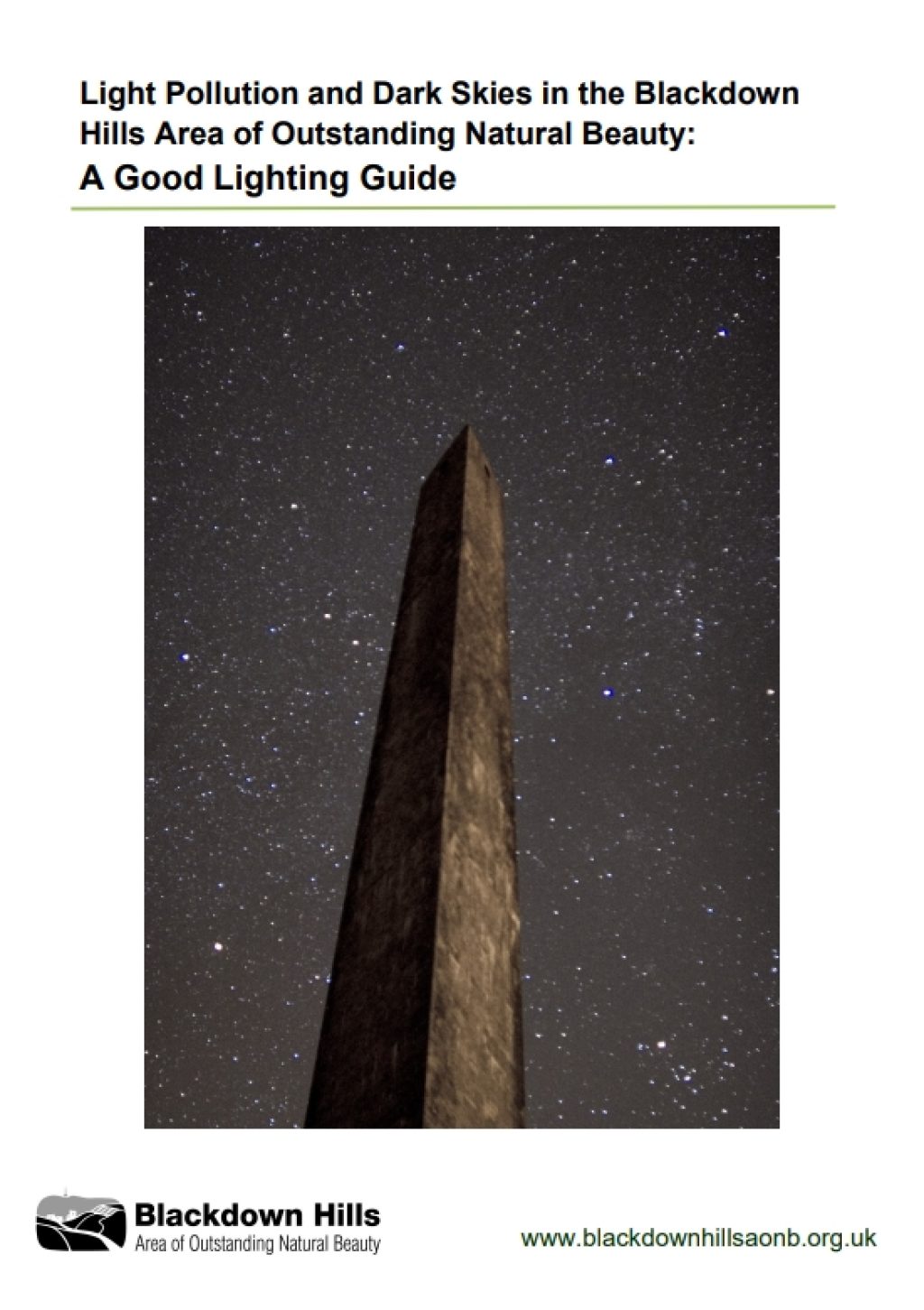A good lighting guide

Light pollution and dark skies in the Blackdown Hills Area of Outstanding Natural Beauty: A good lighting guide
The Blackdown Hills Area of Outstanding Natural Beauty (AONB) is one of a family of AONBs established in England and Wales under the National Parks and Access to the Countryside Act 1949. Along with National Parks, AONBs are ‘protected landscapes’ formally recognised as representing the finest countryside in England and Wales, where special policies should apply to safeguard and manage the countryside for the benefit of this and future generations.
The Blackdown Hills were designated an AONB in 1991. The primary purpose of the designation is to conserve and enhance the natural beauty of the landscape; ‘natural beauty’ is not just the look of the landscape, but includes landform and geology, plants and animals, landscape features and the rich history of human settlement over the centuries. Natural starry skies are one of the sights which make the Blackdown Hills so special.
Night time darkness is a key characteristic of the area’s sense of tranquillity and relative remoteness. Light pollution has the potential to erode and destroy that tranquillity and sense of remoteness. It erodes the ability to see and understand the dark night skies and beauty of our galaxy. Light pollution has adverse impacts on wildlife and human health, and wastes money and energy.
Light pollution is artificial light which shines where it is neither wanted, nor needed. It is the result of lighting which is poorly designed, badly directed or unnecessarily bright. Fortunately light pollution is reversible. In relation to restoring dark night skies this involves simple actions to control, limit, and reduce light pollution. This guide is therefore intended to help provide information and advice to individuals, businesses and decision makers interested in reducing and avoiding light pollution.





